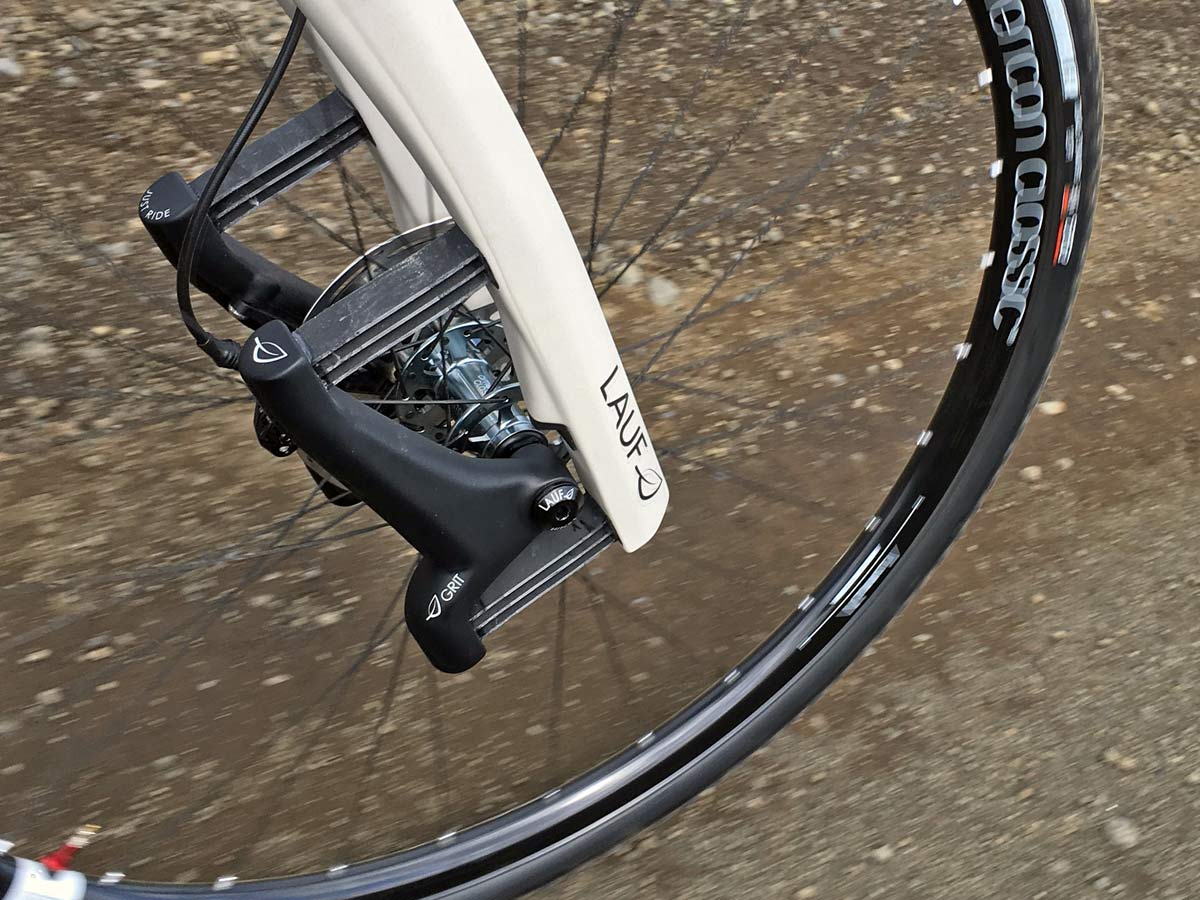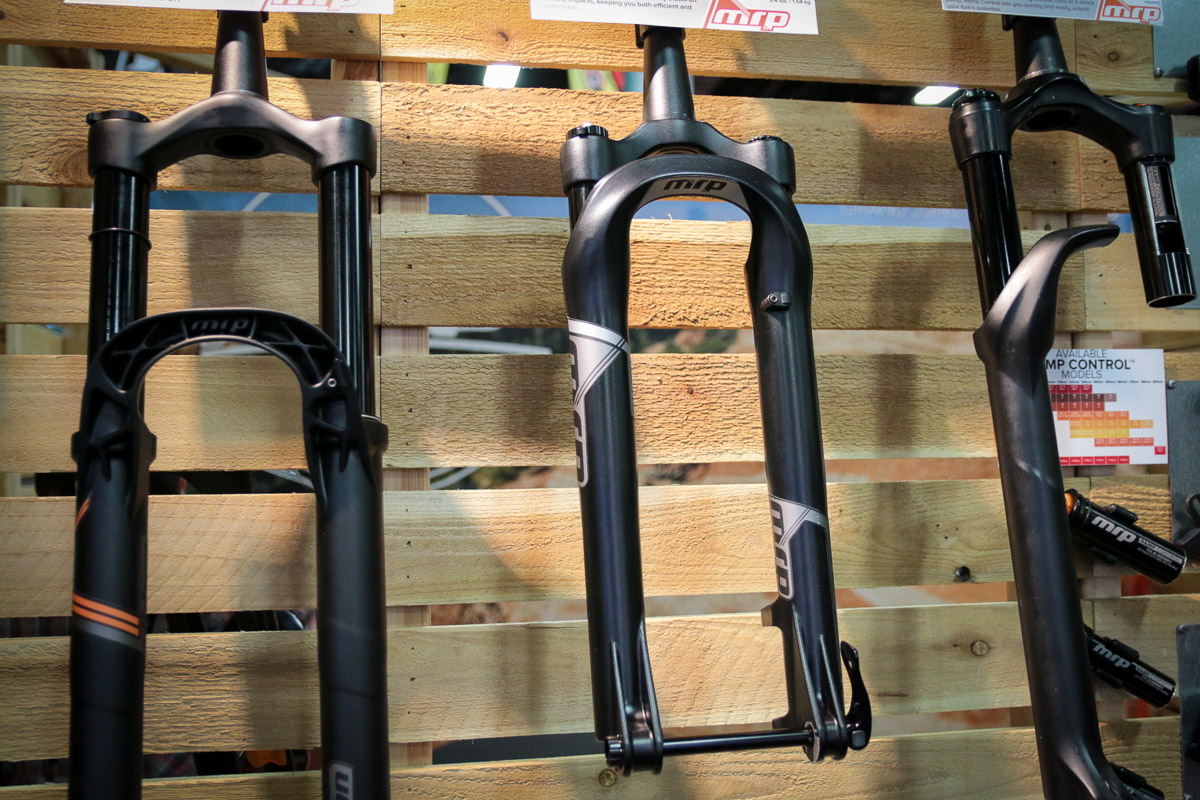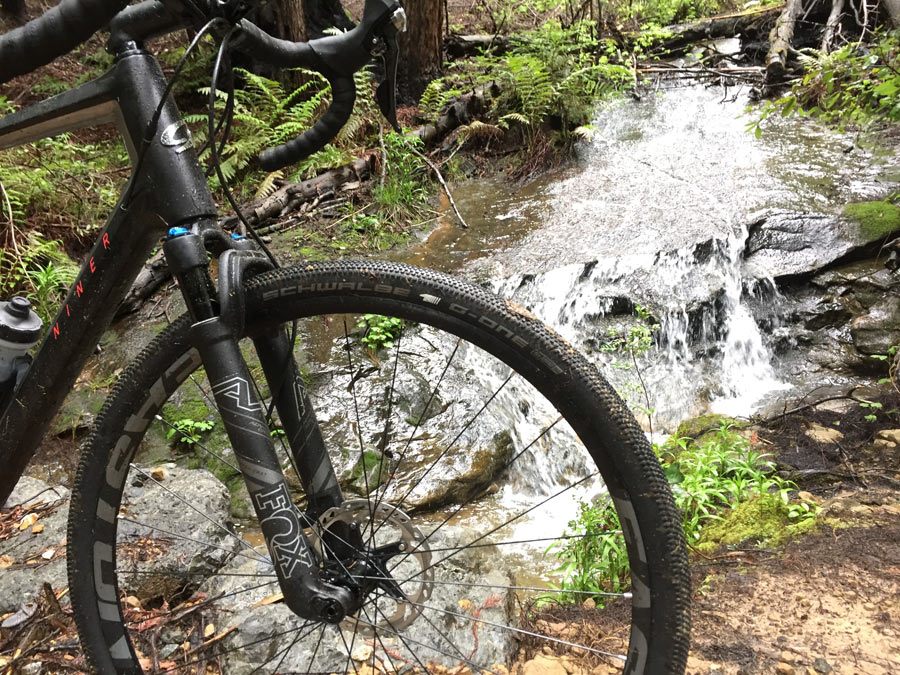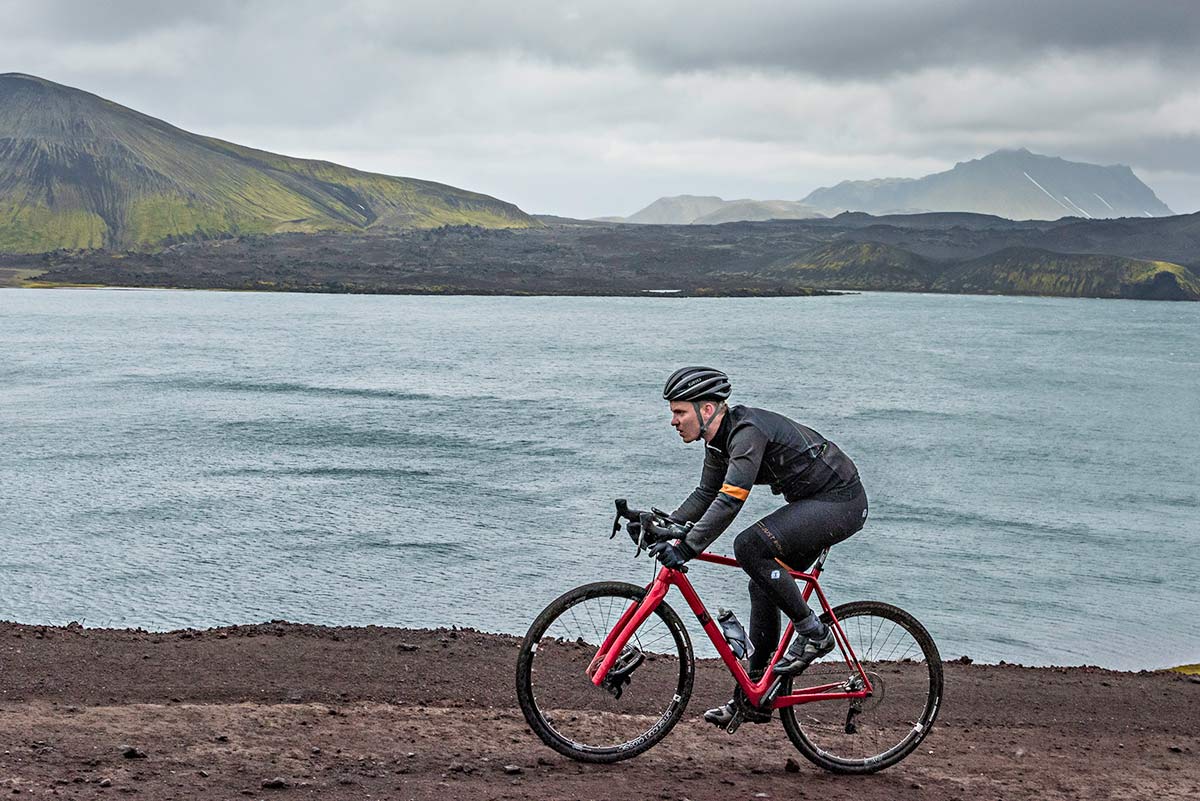With the introduction of MRP’s Baxter following the Fox 32AX, which we rode just after seeing the X-Fusion Ranger, and Lauf expanding their Grit lineup, we wondered: What makes for a gravel-specific suspension fork?
Since Lauf pioneered the category and is really the only brand that designed a product from the ground up specifically for gravel bikes, we started there:
“A gravel suspension fork should be extra responsive to small and fast hits, while minimizing the traditional drawbacks of suspension forks; weight, maintenance and loss of energy,” says Lauf co-founder Benedikt Skûlason. “In other words, a good gravel suspension fork should enhance the capabilities of your gravel bike, not turn it into a mountain bike (because then you’d be losing your gravel bike).”
Then we turned to the more traditional fork makers to get their take:
“It’s mostly the geometry,” says Noah Sears, MRP Brand Manager. “The challenge is getting any travel into what’s essentially road bike geometry.”
MRP is reusing the Loop chassis, but the air spring and damper are totally new, designed for a really firm, progressive response. “It’s really there to take the edge off washboards and expansion cracks and stuff like that,” says Sears. “The damper has three positions -open, mid, and firm- giving you options based on the terrain.
“On the rebound side, we had to be really aggressive there, too. the spring force (air pressure) is so high, so we had to make the ports smaller to add more damping. Where you might run 90psi in the 100mm Loop or 65psi for a 150mm travel Ribbon, you might run 130psi in the Baxter.”
(Editor’s note: Why higher air pressure? Read this.)
Both the Fox and MRP forks use 40mm of travel, which is the most they can get while still fitting within the generally acceptable axle-to-crown measurement of 425mm (without sag. How much sag to run “is really up to the user,” says Sears. “We’re kind of in uncharted territory.”
As for Fox, their marketing manager Mark Jordan, had this to say:
“That’s a tough one because we didn’t really make specific one, we just modified what we had to get something immediately. The axle mount, brake setup and crown clearance can be a challenge for some bikes and riders.”
And if they were going to do something gravel specific?
“The biggest challenge is the crown doesn’t clear all the downtubes,” says Jordan, “so we’d want to drop the crown a little bit or do something different there. And we’d probably stick to a 12mm thru axle, and switch to flat mount brakes. Those would fix the three main issues we have with our current offering.”
So, is there a market for this?
“The idea of it is pretty cool,” Jordan admits. “People are starting to look at it, but our numbers aren’t high enough (to justify more development), but could it be that these fitment issues are keeping people from looking at it?”
Hmmm, a real chicken and egg dilemma, no?
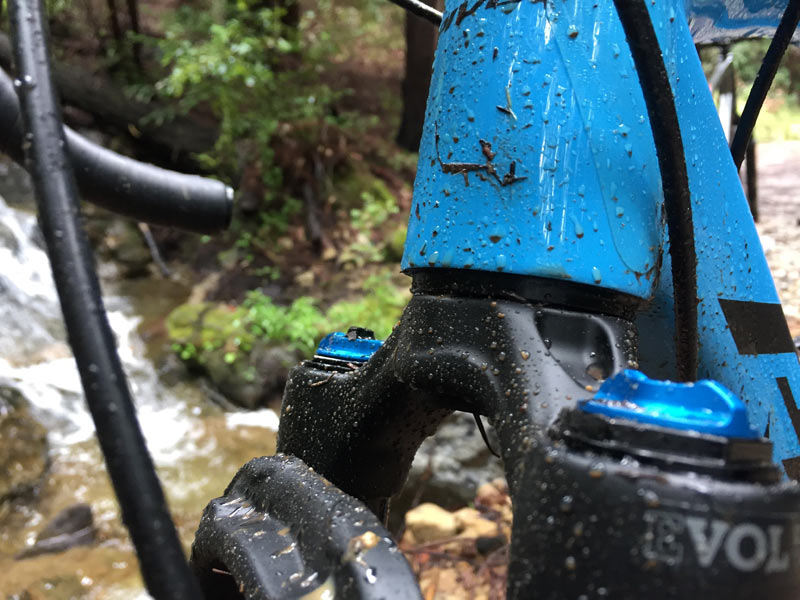
Both the Fox AX and MRP Baxter have potential fork crown-to-downtube clearance issues. And both were kind of driven more by the fact that they could do it, and some sponsored riders could benefit from it for certain events. When those popped up on social media, and as gravel’s “become the new enduro” (Nick’s words) there was enough consumer demand to justify using existing parts to offer an option.
MRP’s Sears adds “We don’t think this market is big enough to bite off the tooling costs to create an all-new chassis, but we could re-use an existing one and make a product that’ll serve riders well, so for now that’s where we’re at.”
The other thing to consider is small bump performance. There’s inherent stiction on traditional telescoping forks, which is why we use special coatings and try to overcome that initial inertia with negative springs. And this is where Lauf’s other claim to fame is, as evidenced in the video above. We suspect inverted forks might come closer to this since there’s far less unsprung weight to get moving, and Cannondale’s needle-bearing equipped Oliver fork is very smooth, but has that aesthetic challenge to overcome (for some, we kinda like it).
As for where this is headed, we have to imagine if there’s demand, there’s no doubt we’ll see more innovation and more gravel-specific designs that are lighter and sleeker. You know, like the Lauf Grit.
